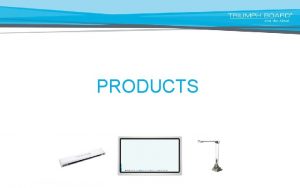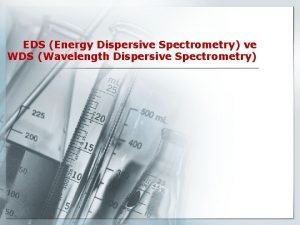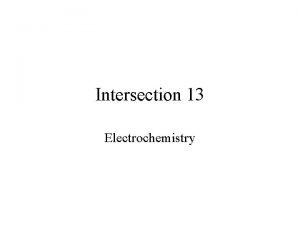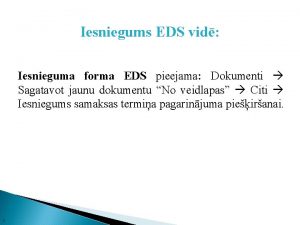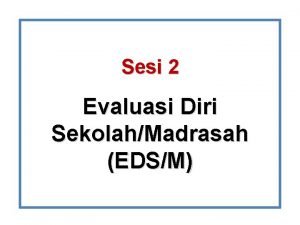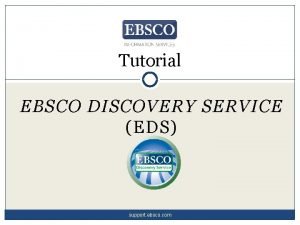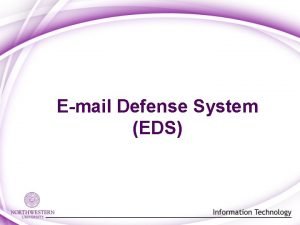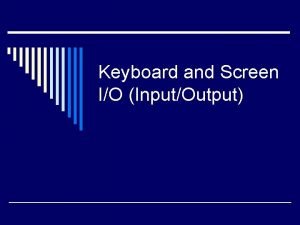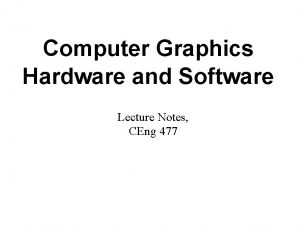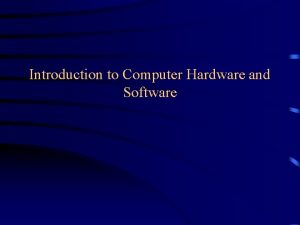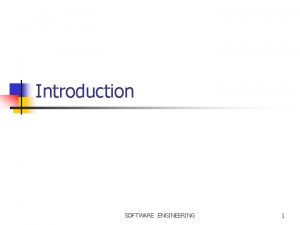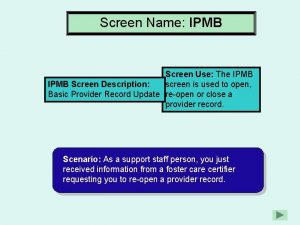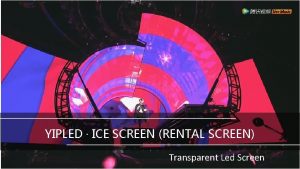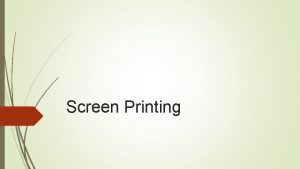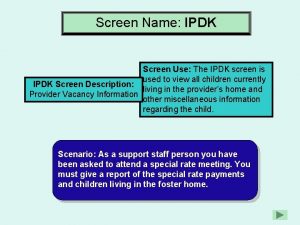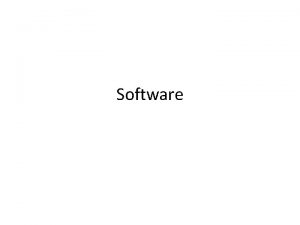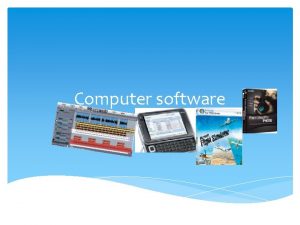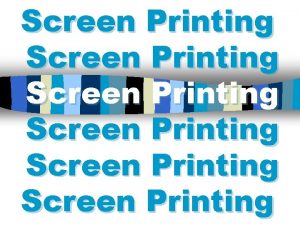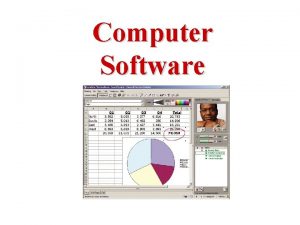Oxford EDS Computer Screen and Oxford EDS Software





































- Slides: 37

Oxford EDS Computer Screen and Oxford EDS Software – AZTEC, Double Click Aztec icon to start the EDS software (after start the SEM software)

Open Or Set up New Project

Default Project Name Project 1 (you can change the name)

Put your data on the D directory


Data Tree : Project Specimen (like thin section name) Site (like circle name of the thin sections) Images and EDS Spectra

This is the starting window Navigation Panel Support Panel

Analyzer : Provide you with a general spectrum of the whole image in the SEM window (no image taken, just EDS spectra). Point & ID : Allows EDS acquisition and image acquisition (used most of time). Line. Scan : Provide you with a linear elemental distribution within the image. Mapping : Provide you with a 2 D elemental distribution (a full spectrum is stored from each pixel). Optimze: Do not use it.

Make sure the software is set to EDS-SEM instead of EBSD if using EDS.

Point&ID It allows to take image and show the area for EDS on the image.

Point & ID Describe Spectrum Summary You can write notes about the sample and the notes will be included in the saved reports (normally skip this part to save time). Make sure to include the information about a specimen coating (ex. Carbon). Spectral data from the sample coating will automatically be screened out by the software. Check Sample is coated and then put 40 nm if you use the samples coated for microprobe.

Point & ID Describe Spectrum Specimen Geometry “pre-tilted specimen holder” is not selected (when EBSD is used, this is selected by people. So you should not select it if not using EBSD). This is also a place to add new specimen (click New Specimen button).

Point & ID Describe Spectrum Pre-defined Elements –> Elements of particular interest can be added to the Auto. ID (Click Clear ALL first (to avoid confusion later)then select perform Auto ID During Acquisition).

Point & ID Scan Image Tab : take SE or BSE image from here Click Setting button.

Settings: Scan Size: 64 – 8912 (normally 1024 or 2048) Dwell Time: 5µs (fast), 10 µs (normal) (This is scan speed) Input Signal: SE (even for BSE) Number of Frame: normally 1 Uncheck Software Tilt Correction Auto Lock (don’t use most time, so do not touch it)

You can put more images under a single Site if you lock the image by clicking the padlock icon. If you don’t lock the image, the next image will overwrite the current image.

Click START button to obtain image. Note: This is continuously scan button. You can use it if you want to adjust the SE/BSE image, such as focus , brightness and contrast adjustment … before taking the image. Click again to stop it.

You can Edit the image with these icons (normally not use them)

Point & ID Click Acquire Spectra Tab: obtain EDS spectrum from here.

Check Settings: Energy Range : normally Auto or 20. Number of Channels: normally 2048. Process Time: Normally 4 (5 or 6 for elements close each other, 2 or 1 for mappping). Acquisition Mode and Time: Live Time and 20 s (more for mirror elements). Select Pulse Up Correction.

On the bottom left side, Select Rate (not Mini View). Check the Dead Time on the detector, it should be between 30 -70%. For quantitative analysis, it should be around 30 -40%. If not in the range, change the Spot intensity in Hitachi SEM.

Click start to scan the entire area as displayed by the electron image (normally not use that) Use this menu (point, square, circle and any shape ) and click the location on the image. The EDS spectra will start and be saved automatically on each locations The status bar will show the progress of the scan

Image area with locations of the spectrum You can change the spectrum name any time EDS spectrum Mini Compositions

You can show spectrum intensity or weight percent of the elements.

Here allows you to show only image, image plus spectra or only spectra

Point & ID Click Confirm Elements (to verify and identify the elements from here):

Click Setting then select Marker (it is default, normally you skip this part)

Press Clear all and use the Auto-ID function to relabel the peaks. You can adjust the spectrum range, height…You can remove/add element label… (normally remove carbon label because it comes from coating) You can change the energy range and peak height with mouse Select the element: Double click the element or select the element and then click the include button (green) Remove the element: select the element and the click exclude button (red)

Click ? (information) double click the peak of the spectrum confirm the element with the best match between actual and theoretical peak (brown color)

Point & ID Click Calculate Composition Tab from here: Calculate Composition after element IDs are confirmed (in confirm element tab).

Click Settings : Processing option all elements or Oxygen by stoichiometry (if oxides) Put number of oxygen ions (in formula) if you know mineral name Select Normalize results Element list current spectrum Quant Standardization Factory Threshold quantitative results enable 3 (~ 1 wt %) Select Automatic line selections for all elements unless you want to use different lines. You can change valence of elements here After make changes, click Apply and Save close Requantify

Requantify

Click Edit Column to set up display of the calculate result

Export Result Methods 1) Report Results Tab Save As : save a. doc file for a site

2) Report Results Report Templates Select a template Save As : save a. doc or excel file (including note. . image. . spectra and quant data depending on the template). Normally choose “ Current Image-Notes-Multiple Colour Spectra and Quant”


Close the software : File Close AZtec Although the files are saved automatically when they are created, you should go to “File” and “Save Project” before moving your documents, shutting down the software, or turning off the beam to avoid losing data. .
 Screen small screen offscreen
Screen small screen offscreen The area of a rectangular computer screen is 4x^2+20x+16
The area of a rectangular computer screen is 4x^2+20x+16 Triumph cloud free download
Triumph cloud free download Qr kods eds
Qr kods eds Mccalls festoon
Mccalls festoon Eds
Eds Sem eds analizi
Sem eds analizi Electrolysis table
Electrolysis table Vid eds
Vid eds Eds/m
Eds/m Eds.kedschool
Eds.kedschool Eds symptoms checklist
Eds symptoms checklist Eds.a.ebscohost
Eds.a.ebscohost Geosc 10 psu
Geosc 10 psu Fibrylina
Fibrylina Eds
Eds St eds vle
St eds vle Eds webmail
Eds webmail Eds.a.ebscohost
Eds.a.ebscohost St eds vle
St eds vle 3 components of computer system
3 components of computer system What is computer organization
What is computer organization Output devices drawing
Output devices drawing Difference computer organization and architecture
Difference computer organization and architecture Keyboard.next java
Keyboard.next java Screen design and layout in hci
Screen design and layout in hci Advantage and disadvantage of touch screen
Advantage and disadvantage of touch screen Screen with siege of belgrade and hunting scene
Screen with siege of belgrade and hunting scene Output device
Output device Brigance screen iii kindergarten data sheet
Brigance screen iii kindergarten data sheet Hardware and software of computer graphics
Hardware and software of computer graphics Introduction to computer hardware
Introduction to computer hardware A computer system consists of both hardware and software
A computer system consists of both hardware and software Computer skills for preparatory programs
Computer skills for preparatory programs Difference between generic software and custom software
Difference between generic software and custom software Difference between student software and industrial software
Difference between student software and industrial software Halstead software metrics example
Halstead software metrics example Structure of computers
Structure of computers


